Text
Devil May Cry Review
Last year, I adopted my little PS2 from a Value Village. I lovingly took it home, gave it a gentle bath, and spent at least a dozen hours carefully swabbing it's insides of dust. All this, so I can get the experience of playing popular and longstanding game franchises, like God of War, and Metal Gear Solid, where they began. The things we do for love, I guess.
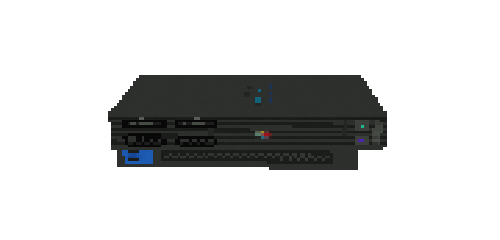
Since then, I've been on a bit of a side-quest in life, sort of. A quest to discover why popular pieces of media got so popular, by experiencing them first-hand. I have this drive to learn about what is beloved, to join in the fun of fandom with others, and so when I saw a lot of fanart of white haired brothers with magic swords, I got curious. One thing led to another, and after many, many hours, I have some thoughts.

Devil May Cry, for the PS2, is a very interesting case. For one, its the accidental sister to Resident Evil, as it was originally intended to be the third installment in that franchise during development. Yet the two could not be more different, in terms of gameplay style, visuals, and execution as a whole.
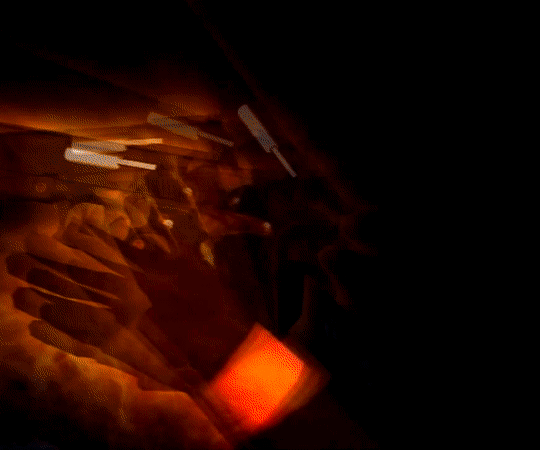
Where Resident Evil is all about forcing the player into difficult situations , Devil May Cry feels a little more lax. Resident Evil makes the player slowly take in the atmosphere, learn about the lore, and use their knowledge of the map to their advantage, while Devil May Cry prioritizes snappy combat over exploration and puzzle-solving.

The focus on combat is what everything in DMC revolves around, for better or for worse. There's a variety of visually interesting moves you can pull off, and more to unlock by trading in currency gotten by killing enemy monsters. More upgrades means more cool moves, means more interesting combat, and more ways to tackle bosses.

At times, though, the complexity of the combat system left me feeling overwhelmed. This is one of the few games where I had to read the manual in order to play, as there isn't any tutorial, and combat can be punishing in early stages if you aren't fully familiar with Dante's moves.
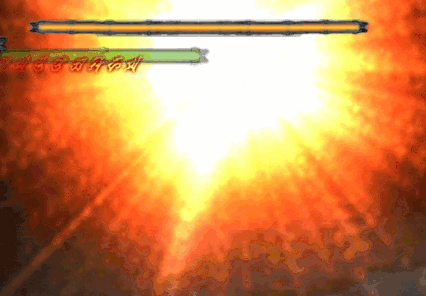
Even after learning the ins and outs of the controls and combat, I still got my ass handed to me by the first boss, and every one after that. Each one felt like a massive hurdle, and forced me to really learn how they worked in order to even stand a chance. In the moment, I was frustrated, but looking back now, I haven't had to work this hard with a boss in years. Spending hours sitting on my couch, going over the attack patterns, it was almost meditative (if not for the occasional shouts of expletives here and there on my part).

Devil May Cry, as a whole, isn't incredibly difficult, as long as you know what you're doing. The game is about figuring out your enemies' weaknesses and the best ways to exploit them, not just rushing in and hoping you'll live. Figuring this out is the first challenge, the second is the underwater controls.
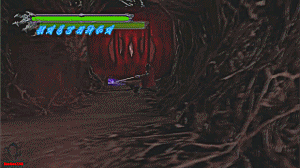
Apart from gameplay itself, DMC is pretty interesting. The gothic architecture is a bit of a far cry from Resident Evil, but carries over it's grim tone and atmosphere. Colors are muted, music is oppressive and heavy, and everything lends to this feeling of grandness and fantasy. It really makes the player character stand out, which is great when you're getting ambushed by ice lizards, or something equally monstrous, in one of the many grand halls.

This review also wouldn't be complete without talking about the main character, who is a delight to be around. Honestly, Dante is the reason I picked up this game, and the reason I kept coming back to it, even after countless GAME OVER's. His snarky attitude, stylish coat, and cockiness make him a fun character to see interact with others and his surroundings, and really help him stand out from the holier-than-thou demons he faces. He's always got something to say, isn't afraid to speak his mind, and just wants to have fun, and really, who can blame him?

The story of the game, though, left a bit to be desired. Yes, its epic, and gets better in the second half of the game, but for a while, the game felt aimless. Why do I need to get these magic items, to unlock these doors, to do these tasks the game sets as mission objectives? In most games, they usually directly tie into what the player character is doing, and help facilitate a progression of story. For example, when Jill finds Richard in RE1, and has to get him an antidote before he dies, its not just a fetch quest; it teases the snake boss, establishes Richard as a character in the game's world, and depending on whether or not you save him, it affects future gameplay.
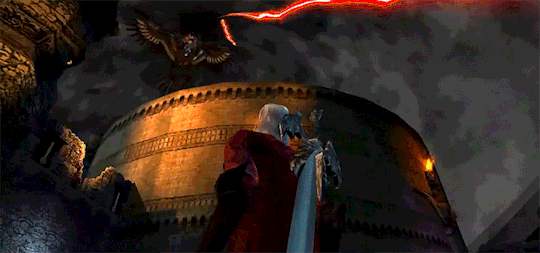
In DMC, though, each mission feels like homework, an assignment to do before a deadline or else. Sure, its a good way to show players the next objective, and as a neurodivergent person I love having clear and concise instructions, but it kills the mood. I never felt like I was exploring the castle, discovering new things and furthering the plot. It felt like I had a to-do list from the game devs, full of tasks that rarely were related to the plot, and usually just meant 'go here, get the thing, bring it somewhere else'. It would've been nice if the quests explicitly furthered the plot, but at least they told me where to go.

Don't get me wrong: I don't hate this game. I actually liked it, but there were lots of issues I had with it that soured my experience. Unforgiving bosses, overly complicated controls, and a lack of story immersion made me feel like this game was an experiment with this style of gameplay on Capcom's part. If this had a bit more polish, or maybe a tutorial, I might try playing on a higher difficulty. For now, though, I'm excited to see what's new in the sequel. I've heard its... rather infamous. Exciting.

#film critic#review#game review#video game review#retro gaming#retro games#playstation#ps2 nostalgia#devil may cry#dmc1
2 notes
·
View notes
Text
Samurai Champloo Review
What the hell even is a 'champloo' anyways? Ever since one fateful Passover seder, where my older cousin told me about this series, I've wondered about it. Its certainly not English, and though a quick Google search could give me my answer, the mystery of it all kept this show on my radar for nearly a decade. Its not often that a show with a title as puzzling as this get popular, especially enough for my slacker cousin to recommend it to me. With a recommendation like that, though, I knew there was something special about it.
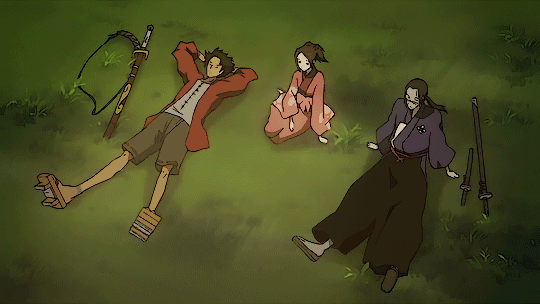
Samurai Champloo is a strange breed. Created in 2004 by Masaru Gotsubo, and animated by defunct studio Manglobe, the series follows a trio of miscreants on a journey to find a mysterious samurai. Along the way, they dodge the law, fight assassins, and discover how hard it is to be a minority in a changing world.

Champloo's biggest draw is it's style. The series features a modern-style Edo that keeps the historical dress and architecture, but adds a contemporary kick everywhere else. The opening alone sets the tone perfectly: sharply colored characters, juxtaposed onto paper-like backgrounds, moving to a hip-hop flow. Its stylish, like an old-school music video, and draws you in in seconds with its funky beat and striking visuals. Its the perfect opening, and things only get cooler from there.
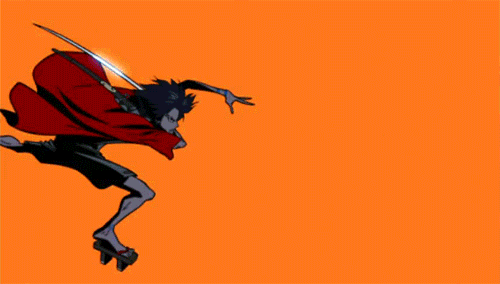
The Edo of this anime features a mix of traditional Japanese and modern North American styles, presented in a way that sets it apart from the rest. Its a show where you might find a samurai sword fight set to record scratches, or characters wistfully embarking on a journey while hip-hop music plays in the background. Early episodes use these scratches in the soundtrack as editing cues, cross-cutting between actions at the sound to create a wholly unique experience. It can't be overstated how much the musical styles of this anime make the viewing experience shine.

On top of that, much of the content of the show's episodes takes pages from a more modern handbook. One episode has the main trio caught up in the world of graffiti, as two brothers compete to see who can 'tag' the most dangerous places. Another has them play against American traders in a overly-violent game of baseball. All the while, characters talk with modern slang, ditching formalities and keeping with the tone the soundtrack sets. All this combined creates a historical anime that feels surprisingly contemporary, despite the obvious.
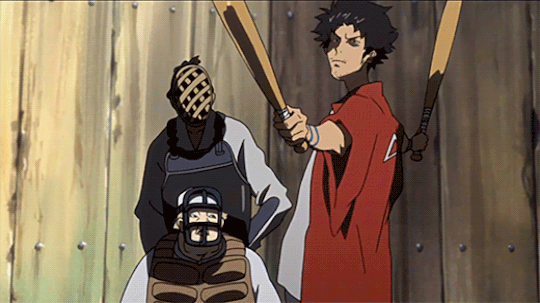
Over the course of the show's 26 episodes, we follow a main trio of characters as they journey to find a mysterious samurai who smells of sunflowers. The trip is long, and each episode usually features the gang stopping somewhere and getting involved in a stranger's problems, usually learning some moral or getting a lead on their quest afterwards. Its not often for series as mature as these to be episodic, given how seriously they take their plots, but here, it works well.
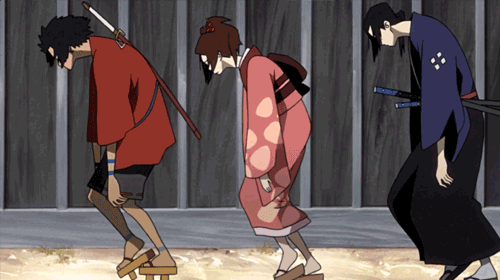
Every episode feels like another step along their journey, whether it be an eating contest in a big city, or hunting down a pick-pocket who stole their wallets. The series also does an excellent job at making the journey feel long, often referring back to the places the characters have been so far to keep track of it. You could actually track the trio's journey with a real life map if you wanted, since all the places they visit are historical, and probably still exist. Maybe someone out there has even tried their journey in real life...?

An anime is only as interesting as its main characters, and this one certainly has an interesting cast. The series stars three characters, who together, always find a way to screw things up in the most hilarious ways. First, there's Fuu, a young woman who meets the other two characters when they burn her workplace down, and enlists them to help find the samurai who smells of sunflowers. The show pulls no punches with her, often having her be the butt of the joke just as much as her companions. She's loud, whiny, naïve, and often eats the most out of all of them. Yet, she's usually the one that stops fights, is the voice of reason in all this show's chaos, and shows kindness to everyone she meets, even someone who tried to kill her. Though the other characters might play her off as another nagging woman, Fuu's right more often than not, and is a valuable member of the team.

Next is Jin, a ronin with a cool attitude. He's the level-headed one of the trio, often keeping to himself instead of jumping into arguments like the others. His cold exterior hides some pretty deep traumas, which were exciting to learn more about as the story developed. Characters like him are often stereotyped as unfeeling swordsmen, yet beneath all the sullen glances and reclusive body language, he grows to care about his companions more than any sense of pride.
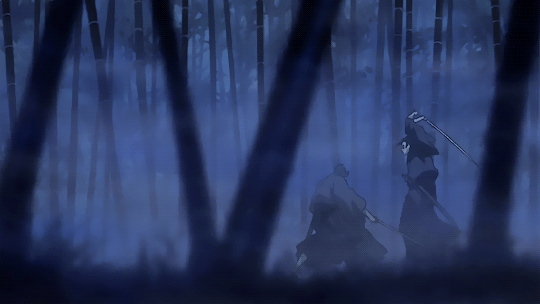
Lastly, there's Mugen, the wild vagrant. His reckless fighting style, love for battle, and unquenchable pride endeared him to me pretty quickly, making him an easy choice as favorite. Compared to Jin and Fuu, Mugen is an old-school tough guy, a shonen protagonist aged up a decade and thrown backwards a couple hundred years. Like Jin, he initially is quite guarded, but learns to express himself little by little, eventually revealing his tragic backstory. Though, to be fair, most of his self expression comes in the form of violence or threats, but I'm not here to judge him.

Together, these three form a simple comedy trio, and get into trouble at every turn on their journey as they learn to tolerate each other. From start to finish, the trio struggle to get along peacefully, but that's what makes their dynamic worth watching. Mugen and Jin's mutual hatred, balanced out by Fuu's persistence, is what keeps them going. Depending on what episode it is, they take turns being the 'straight man', keeping the dynamic fresh and free of stale tropes.

At the heart of this anime, though, is its theme of identity in a changing world. Throughout the series, the trio encounter various minority groups along their journey, and learn about their unique struggles. One episode has them protecting a secret Dutch immigrant, taking him on a tour of the city while they dodge immigration officers. When the man reveals that he fled his home country because of homophobia, it doesn't feel out of place or poorly handled. His queerness is just as much a part of his character arc as his foreign-ness, and though the show makes a few light-hearted jabs at his accent and obvious visual difference, it takes the rest of his identity rather seriously. This character, while only in the show for an episode, is just one of many minority characters in this series that is handled well, showing that a series doesn't have to be disrespectful to be historical.

Another major theme in this series is death, and the acceptance of it. Being an action series, its pretty obvious that a lot of characters die, but what's interesting is how other characters deal with those deaths. Many side characters who the trio befriend on their journey are dealing with loss in some way, whether it be a husband, sibling, child, or something else. We witness how their grief drives them, such as with Fuu, or various other characters in the series. In a world such as the one in this series, death is commonplace, but a healthy acceptance of it is unfortunately less so. Each encounter with death in the series opens up new discussions about it, and often had me pondering what these characters might do next, or how I would deal with their situations.

In the end, though, Samurai Champloo is a fascinating series that brings a unique blend of Eastern and Western styles to make a truly memorable viewing experience. It's hip-hop soundtrack pairs beautifully with flashy and quick-paced sword fighting, creating a simultaneous modern-historical vibe to it all. Its characters have an enjoyable dynamic that kept me coming back day after day for more, which inevitable led to disappointment upon discovering how short this series is. If we lived in a perfect world, this would have at least an extra season, but unfortunately, perfect this world ain't.

But hey, at least I can spend my Pink Halloween (read: Valentine's Day) knowing that Fuu is valid, Mugen is gender, and Jin defintely got pegged in that one episode.

#anime and manga#anime review#film critic#review#anime#anime critique#animation#animated series#samurai champloo#otakucore
20 notes
·
View notes
Text
Castlevania Nocturne Season 1 Review
Its a good time to be a gamer, or an adult who likes animation. After decades of flop after flop, it seems that filmmakers and animation studios finally got their shit together, and realized that video games aren't just a fad that will pass in a few weeks. We can now rest easy, knowing that the people who make video game adaptations actually know what video games are, and did their research on them before putting pen to paper.
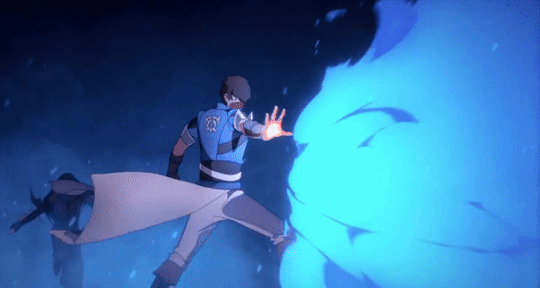
Sure, in every boom, there's bound to be a few stinkers. I doubt any news outlet is putting the live action Monster Hunter movie in their 'Top Ten Best Video Game Movies' lists anytime soon. But as it stands today, the market for video game adaptations for the big (or small) screen is bustling, with major successes like the Super Mario Bros movie proving just how successful they can be.
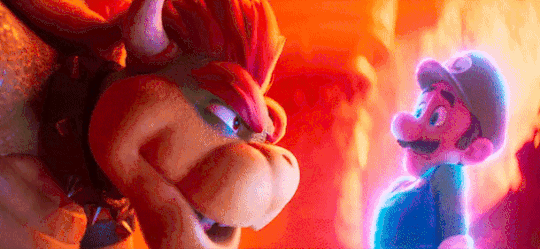
Streaming services, as well, have taken this in stride, putting forth their best and brightest to make some damn good shows for their platforms. With shows like Arcane, Cyberpunk : Edgerunners, and Castlevania (2017), most video game or animation fans have been eating well with Netflix, and the release of Nocturne last September was just another scoop on the sundae.

Castlevania: Nocturne is a short animated series created by Clive Bradley, and directed by Sam and Adam Deats. Based on the Konami games, Nocturne follows a group of young magical heroes who work together to stop a secret ruling class of vampires from summoning a messiah and bringing about the end-times. A cunning show with a dark premise, Nocturne is 8 episodes of fast-paced, blood spraying, beautifully animated action that lives up to it's precedent's legacy.
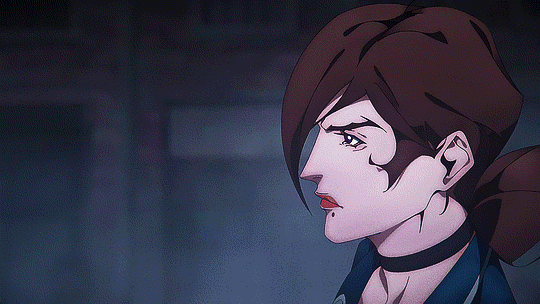
Coming just 2 years after the finale of the original series, Nocturne only ups the quality of the series as a whole on all fronts. For starters, the visuals. My god, the animation is incredible! I wish I could show every fight scene, every smoothly-animated sequence here, but alas, I'd lag the shit outta this post. I'll spare you, mobile users.

Watching this show took me back to 2017, when the original series came out. Sitting on a bus, on a youth trip in the middle east, I'd watch the fight at the end of season 1 over and over, trying to spot how they animated it. Seven years later, I still find myself staring in slack-jawed amazement at the slick animation on display, which moves so fast that at times, I can't even tell what's going on. One thing's for sure, though: its goddamn beautiful.

On top of that, Nocturne keeps the series' ball rolling, adding onto the previously established lore while keeping the past relevant, to make it fit the overarching narrative. It acknowledges what happened at the end of the previous series, and continues where it left off, albeit a few decades later. Nocturne's main characters aren't nobodies: their family lineage and abilities link them to the previous trio, showing how though the passage of time, the show stays the same.

The main character, Richter, is a stark contrast to Trevor, the previous series' protagonist. He's polite, nicely dressed, works well with others, and has a lot to learn about his ancestry, which gets revealed more over time. Where Trevor felt like a seasoned vampire hunter, Richter has this sense of youthfulness about him, making him feel more inexperienced. We get to watch him learn and grow, rather than start with him already being experienced, and it feels satisfying to see how far he's come by the last episode. Plus he gives me gender feels, so he's alright in my books.

Supporting him is Maria, this series' counterpart to Sypha, and Richter's adopted sister. She is a leader in the fight for freedom in the French Revolution, and can summon magical animals to fight for her. Her youthful energy, stubbornness, and deep knowledge of politics keep her from being another 'strong empowered woman' , a stereotype which many fantasy series believe is somehow akin to feminist writing.

The third member of this series' main trio isn't a counterpart to Alucard, though she could end up being just as powerful. Annette, a Caribbean woman who fled slavery as a child, can harness the powers of an African god to control rocks and metal, to create weapons or help her allies. She is one of the first major Black characters in this series, and proves to be a valuable ally time and time again, saving her friends' asses at least a dozen times.

Despite the show only being 8 episodes as of time of writing this, Nocturne manages to pull you in quickly, with its likeable characters and quickly escalating plot. When I started this show last year, I was hesitant to let go of the old trio and old story, and adopt this new one. By episode 4, though, I was into it, and wanted to know more about the story. While the original Castlevania takes four seasons to get to the point of a unified team and major evil, Nocturne does it in a fraction of the time, with all of the same grace and glory, and none of the season 3 like its predecessor. Now this is speedrunning!
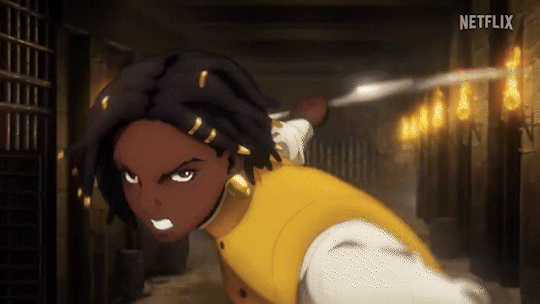
To top it all off, Nocturne continues its family legacy of giving some damn good representation in a show that's source material never really demanded it. Much of the main cast falls into various minority groups, and for one in particular, her struggles are shown in detail. We live in an era where a major animated action series features a metal mage who escaped slavery, an gay Aztec vampire who falls in love with a holy knight, a Black vampire with flaming hair and bat wings, and a vampire matriarch with the power to blot out the sun. There's something for everyone here, and I mean it.
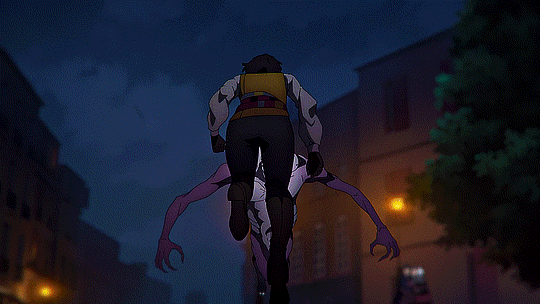
Unfortunately, that's all there is for now. Castlevania: Nocturne, as it stands, is just one season, with a second on the way. Still, what's here is strong, and proves that the original Castlevania wasn't just a lucky break. Just like it, Nocturne delivers blazing fast action, awesome character design, and tons of representation, but quickens the pace of the story to get the ball rolling right away. After 8 episodes, I already feel attached to these new characters, and I anxiously await the next season. Who knows, maybe they'll add a werewolf character!

#anime and manga#anime review#film critic#review#anime#anime critique#animation#video games#castlevania#castlevania nocturne#animated series
1 note
·
View note
Text
The Idaten Deities Know Only Peace Review
What if God was one of us?
Its something you wouldn't really think about, would you? Ever since Joan Osborne's hit 'One of Us' in 1995, though, society has been plagued by it. After all, what would it look like if a god lived among us? Would they be just a slob like us, a stranger on the bus? Or perhaps a powerful hero, a real-life Superman in the flesh?
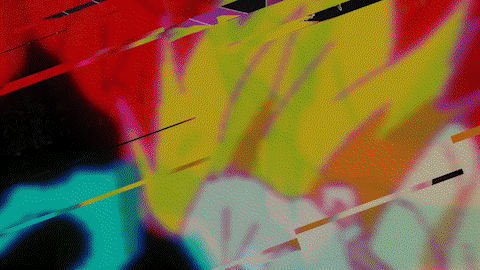
Most shows and games, it seems, take the latter route, preferring their undercover gods to do extraordinary things, rather than hide in plain sight. Series like Noragami (which I've previously reviewed here) turn the concept of gods into immortal superheroes, ones who look human but possess astonishing abilities. These characters find their purpose in doing good for others, protecting the powerless and ensuring the safety of those they care about. But what if the almighty heroes just didn't give a shit?

Enter: The Idaten Deities Know Only Peace, an action seinen series originally published starting in 2019, which got an anime adaptation in 2021. The series takes place in a world plagued by generic demons, which are fought by powerful gods known as Idaten. 800 years before the plot, three strong Idaten sealed the demons away, leaving their protégé to keep the peace in their stead. With the obvious demon threat gone, the next generation of Idaten question their purpose, and face a more cunning, hidden demonic enemy.
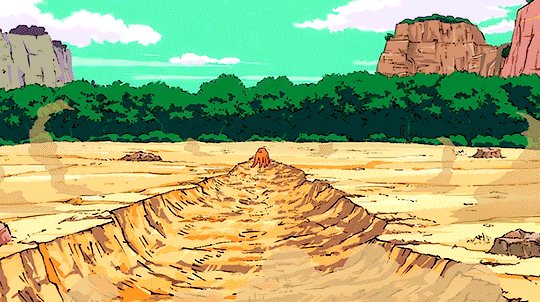
Right off the bat, TIDKOP resembles your typical action shonen series. The main character is a short tempered boy who likes fighting, who is friends with a book-smart nerd and a soft girly girl. He is trained by a wise old warrior who teaches him to fight, and protects him from more powerful threats. Together, they face an organization of monstrous evil-doers, each with their own signature abilities and fighting styles. Add a handful of references to real-world religions, a dash of big fight scenes, and a tablespoon of misogyny, and you're on your way to generic stardom!

Much of TIDKOP is centered around its formulaic plot cycle. The secret team of demons will reveal a new part of their world domination plan, which the Idaten learn of somehow. A demon or two is sent to take out the Idaten in secret, but they're easily defeated and dismembered. The Idaten team gain some information about the demons' plans, and the demons struggle to formulate a new plan. Its Saturday morning cartoon stuff, really.
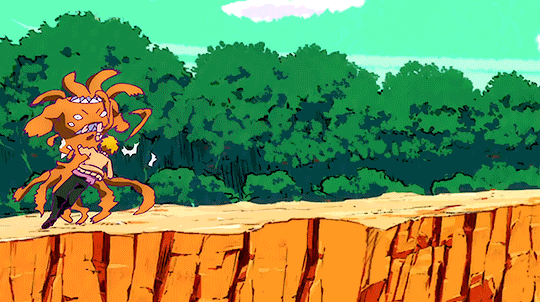
Even when the plot tries to switch things up (when the Idaten lose an advantage), they're quick to return to normalcy, because they rarely ever lose. The Idaten themselves are so ridiculously overpowered, that most situations are dealt with handily before the audience can fully register what is happening. For instance, this show will introduce a cool new enemy with an interesting power, only for them to be decapitated in under five minutes, and rarely ever mentioned again. Any reasonable series would give it's audience more time to get to know an antagonist before throwing them to the wolves, but TIDKOP, it seems, is anything but reasonable.
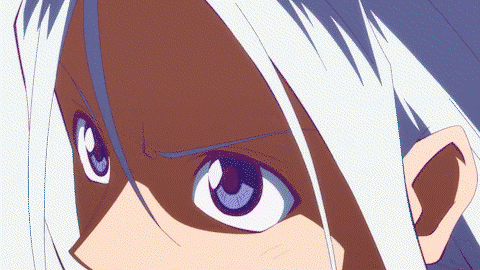
While overpowered characters are to be expected from a series about deities, TIDKOP's poor pacing show that it cares more about it's characters punching their enemies into craters than it does about telling a worthwhile story. Action shows like these use fights as important benchmarks, to show character growth or introduce new concepts to the audience. Here, though, most fights exist just to remind the audience of the Idaten's superhuman strength, or to remove a minor character from existence.
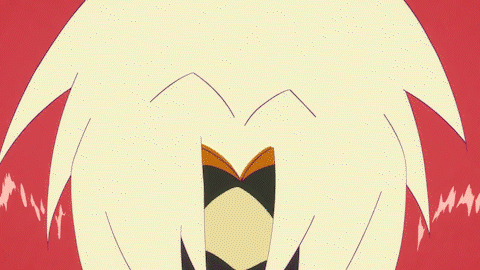
The fights, admittedly, are pretty neat, though they serve little beyond spectacle, or miniscule plot development. When the main trio of Idaten aren't getting their bones re-arranged by their mentor, they're re-arranging the bones of demons, who, as mentioned before, were irrelevant up until the fight and become irrelevant again after their defeat. Characters exchange blows, take turns trying to outwit each other, and than one gets slammed into a mountain, or decapitated if the show is feeling daring that day. After a while, it all blends together, to the point where as I write this, I'm struggling to distinguish major fights from one another.

With it's fights being some commonplace yet unimportant, TIDKOP has less to distract from its disturbing moments, making them stain the anime as a whole a lot darker. This series is a 'seinen', a show marketed towards an older teen to young adult audience, so you would expect that the contents of this series would be a bit more mature than your typical action shonen. You also probably wouldn't expect the first episode to end with a rape scene, which smash cuts to a bright and peppy ending theme, and yet here we are.
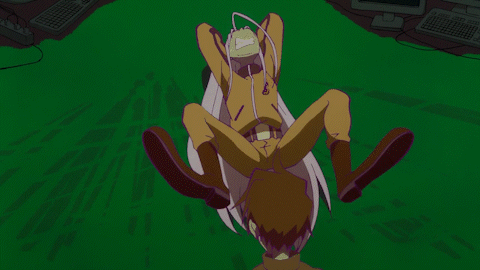
TIDKOP is what would happen if a typical action shonen went full 'mask off', and made it's subtle fanservice and misogyny front and center. For example, one of the main antagonists in the series is a demon named Miku, a nymphomaniac who wears the bare minimum of what could be considered 'clothes', and makes lewd comments to just about everyone she meets. Her purpose in the series obvious: to bait straight guys into watching this mediocre-at-best anime instead of the dozens of other ones out there.

Miku, though, is the most despicable character in this entire series, bar none. She might even be one of the most despicable characters I've ever seen in an anime. Her role in the demons' plans is to round up (read: 'kidnap') innocent women and impregnate them, to create a steady supply of demon babies. She shows no sympathy to those women, because in her eyes, all sex is good, so they should be enjoying it. When she discovers a fellow demon is carrying twin boys, she gleefully tells her assistant that she'll be the mother of their children, and then tricks the young boys into sleeping with them. Whatever guys (or gals) were lured into watching this show because they thought Miku was hot, they have my sympathies.

Nearly every women in this series is sexualized, in one way or another, in demeaning ways. Paula, one of the main team of Idaten, has her long skirt blown up by wind dozens of times, and is groped by a demon despite being heavily wounded. Piscalat, one of the demons' leading tacticians, is subdued by having her top ripped off then gassed with aphrodisiacs. A little bit of fanservice is common in series like these, but after watching this, I want to stay as far away from women as possible.

What sucks is that beneath all the gross sexualization and horrible pacing, TIDKOP has the potential to be really great. The dynamic between Hayato and his mentor Rin was what kept me watching this series, and I wish it was more focused on throughout the 11 episodes. Its not often that you see a female mentor in an action series, and especially one who is taken just as seriously as any man. Rin's coldness hiding her inner fears and abandonment issues clashing with Hayato's hunger for strength makes them a duo that could honestly sustain a series by themselves.

The characters are also wonderfully voiced, with a star-studded cast that most Japanese dub regulars would recognize. Plus, even though the show has a fifty fifty split of male and female characters, nearly 2/3 of the voice cast is female, making it quite the interesting experience to listen to the dubbing. Its a rare treat to see women getting top billing for such a big name series like this one, and the added bonus of gender feels I got from hearing a woman voice a teen boy believably kept me from hating this series fully.
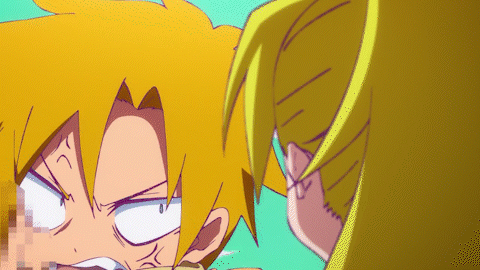
TIDKOP is a colorful, scatterbrained ride of a show. Between the psychedelic intro and pink poppy outro lies a by-the-books action series that wastes no time in breaking faces, but struggles to build suspense. It had cool fights, and neat character designs, but also made me never want to see another breast again. Its clear that the original author was trying to build an epic world or gods and monsters, and I commend him for that (wherever he is). In the end, though, making this show anything more than passable would truly be an almighty effort, one only a true god could do.

But hey, at least I know I'm still aromantic (and possibly asexual). Thanks, MAPPA!
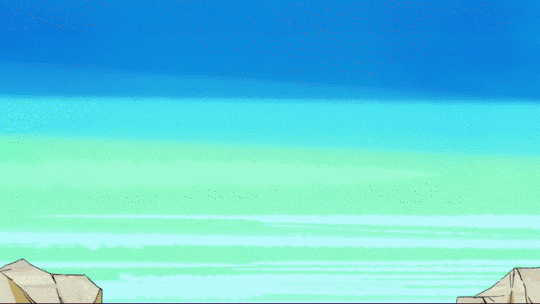
#anime and manga#anime review#film critic#review#anime#anime critique#animation#otaku#idaten deities know only peace#idaten#aromantic#aro pride
0 notes
Text
Captain Laserhawk: A Blood Dragon Remix Review
Its time to talk about crossovers. It seems that everywhere you look these days, big media conglomerates have been rushing out crossovers left and right, hoping to make a quick buck off of the nostalgic masses. To them, its easy money: put two or more popular things together, and people will come with wallets in hand. It doesn't even have to make sense; Fortnite gets away with slapping whatever popular characters they want in the game, because they know kids all across the world will steal their mommies' credit cards to get them.
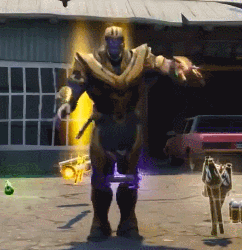
But why all the crossover hate? Some of the most exciting and beloved pieces of media in recent decades have been crossovers, in one way or another. Wreck-It Ralph (2012) had Zangief from Street Fighter, Pac-Man, Bowser, and Doctor Eggman, along with dozens of other video-game characters, and none of it felt forced or contrived. Who Framed Roger Rabbit (1988) was the first time Bugs Bunny and Mickey Mouse appeared in the same scene, and it too, doesn't feel forced. Super Smash Bros., a game series which, under any other circumstances, would be seen as pandering, is one of the highest selling Nintendo franchises of all times, and continues to be an important part of the fighting game community.

Perhaps, then, what makes a crossover film, show, or game, high quality is what it does with itself. Anyone can put a bunch of famous characters in a scene, but what comes next? You've got a bunch of household names in a room together, so what? Pulling off a successful crossover isn't easy, but one thing's for sure: you better sell it quick, and sell it well.
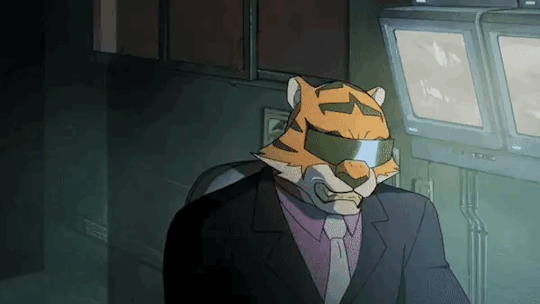
Netflix, for all its ups and downs, sure knows how to sell a crossover. Last year, they lovingly gave us Captain Laserhawk: A Blood Dragon Remix, an animated series that features famous Ubisoft game characters in a dystopian cyberpunk future. Most people, like, me, got excited at hear the premise alone. A crossover with all our favorite game characters, helmed by showrunner behind Castlevania (2017) and the upcoming Devil May Cry series, seemed like a sure bet for some fast animation and punchy violence. Little did we know that behind the neon lights and blood splatters, was an important discussion about media's role in a oligarchic society.
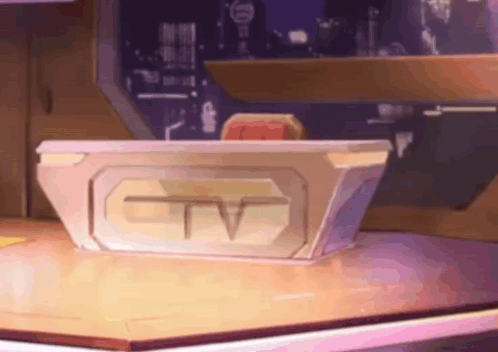
CL:BDR follows Dolph Laserhawk, an ex-military cyborg who fights the governing technocracy with his boyfriend, Alex. Betrayed and left for dead, Laserhawk is enlisted in a covert team designed to take down the government through espionage. Along the way, Laserhawk grapples with his own conflicting feelings, as we learn more about how terrible life has become for everyone.

In the show, the United States has been taken over by a company called Eden, which rules through propaganda and heavy policing. Beneath the shiny veneer of peace and unity that peppy TV show hosts provide, lies a city where poverty is rampant, and anthropomorphic animals are treated as sub-human. Its a harsh reality, contrasted wonderfully by the cutesy, childish propaganda was seen on TVs throughout the show. We see a cute character sing about how we should thank all the 'hybrids' in our neighborhood for all the work they do, then smash-cut to a factory where those same 'hybrids' are forced to produce snake venom for hours without rest.

Eden is run through propaganda, which bleeds into every aspect of life for it's people. Buildings all across cities are branded with the company's name and logo, as blimps displaying the news hover above. Popular television star Rayman (from the self-titled games) gives both the nightly news, but runs the children's network too, ensuring that there's no escape from the government mouthpiece. In a world where major brands have begun to dominate the market more and more, its stuff like this that seems less fictional, and more like a warning.

In that regard, CL:BDR is an excellent piece of cyberpunk. After the Netflix anime, and recent game (of dubious quality), it feels as though most people see cyberpunk simply as another aesthetic. A flashy, edgy coat of paint to throw on when the sci-fi story need a little oomph. It saddens me to see that we're losing sight of the important of cyberpunk, but at least with this show, I can rest easy knowing they got the memo.

Still, for what its worth, the aesthetics are on point too. The show is full of lots of sharp, jagged lines, and angular shading, complimenting its fast action sequences and sometimes complex character designs. Night shots are dense, full of geometric buildings with lights littered like smaller suns, casting colored shadows. Its everything you'd expect out of an anime (or anime inspired) cyberpunk show.
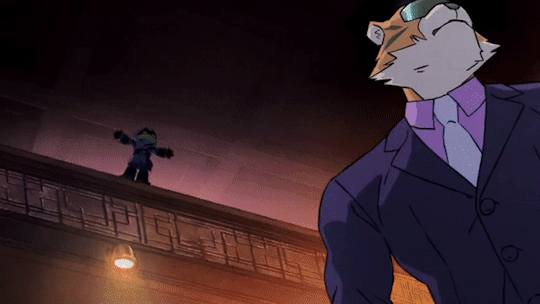
What makes CL:BDR more than just a run-of-the-mill gritty animated series is how it leans into its video game-ness. Like Bocchi the Rock (2022), CL:BDR experiments with different animation styles, playing around with its visuals to achieve different effects. One episode has Laserhawk and his mysterious boss wandering through a virtual world, created by one of the last survivors of the wasteland beyond the city. Inside, both characters appear as their voice actors, pixelated like an old FMV game, yet the world around them is animated like normal. When under stress, the characters flip back and forth between pixilation and chunky polygons, as if going through the eras of gaming technology before our eyes.
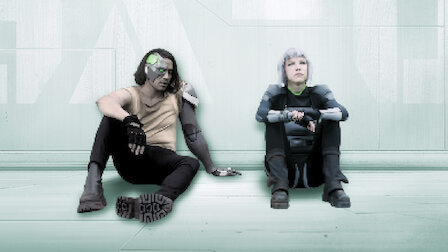
Unlike early video game adaptations, CL:BDR is unafraid to be based on video games, celebrating past games instead of trying to 'class' them up for a wider audience. Nearly the entire main cast are taken from video games, and tweaked slightly to fit the story in ways that feel normal for them. Older gamers will get a kick out of seeing familiar faces, but for younger folks like me, the characters are written in a way that doesn't rely on viewers to have prior knowledge of them. You could watch this show without having played any Ubisoft games and still enjoy it.
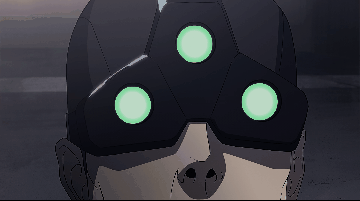
If not for the game references, watch this show for the characters. Laserhawk himself is a deeply fascinating character, who struggles between his sense of justice, a drive for revenge, and feelings for someone he knows he can't trust. In any other show he'd be another gun-waving edgelord, but CL:BDR clearly cares about him, and works hard to get you to care about him too.

Bullfrog is another good character, who, if not for Laserhawk, I'd call my favorite. There's just something comedic about having a trained assassin from an ancient brotherhood be a chipper, cute anthropomorphic frog. In a show where everyone is gritty and serious, Bullfrog keeps scenes from getting too dark, drops a few jokes here and there, and is one of the nicest ones there.

Out of all the characters in this show, though, none are more surprising than Rayman. After years without a new game, and being ignored by Ubisoft in favor of the Rabbids, Rayman finally has his time to shine here, but in the most horrible, wonderful kind of way. Rayman's arc, going from corporate shill to full-blown terrorist, is given a surprising amount of time and focus, and by the end of the show, you really feel bad for him.

CL:BDR, at the end of the day, is a cyberpunk series for gamers, sci-fi fans, animation fans, or really any adults with access to it. Watching this show, I hadn't been this excited to see what comes next in a while, especially given Netflix's feast-or-famine adult animation library. I doubt it'll get a second season, but if it does, I'll be watching it the day it comes out, excited to see what this studio has cooking up next. If it has as much queer rep. as this show does, we're in for a treat.

8 notes
·
View notes
Text
Happy Hanukkah to celebrating jewish aspec! May it be peaceful and joyful to you and any people you celebrate with.
184 notes
·
View notes
Text
Chainsaw Man Season 1 Review
Its that time of year again: the time where the hardcore anime fans gear up for a new batch of seasonal shows. This winter, a bunch of popular anime, including Vinland Saga, Tokyo Revengers, and Bungou Stray Dogs are releasing new seasons, to the raucous applause of most of the anime fandom community.

I say 'most', of course, excluding myself. Where am I in this, you may ask? Always behind the curve, picking up the hits years after they've had their debut, like a reverse hipster. What's old is new again for folks like me, who are still trying to watch all the 'old' series, nevermind keep up with new releases. There's merit in this method, though: given enough time, the shiny glow of newness fades, and we can experience the series without rose-colored glasses.
In my never-ending quest to understand why popular media got popular, I stumbled upon Chainsaw Man, a rather recent hit that was practically unavoidable last year. In a sea of generic anime girl snore-fests, it grabbed my attention pretty quickly for its sheer ferocity and love for bloodshed. After being assigned it in a monthly show exchange, I figured it was about time I'd given it a chance. After 12 episodes, though, I feel like my time could've better been spent elsewhere.

Chainsaw Man (2022) is an adaptation of the manga by the same name, written by Tatsuki Fujimoto. The series follows Denji, a homeless teen who is saddled with a ridiculous debt to the yakuza after his father dies. After surviving an assassination attempt, he fuses with the Chainsaw Devil, and gains its powers of, well, chainsaws. Now, he must work together with an elite team of public service agents to hunt down other devils, to keep a newly found comfy life.

One would be foolish to assume this wasn't a shonen series. With a teen protagonist, superpowers, monsters, and an overarching storyline about growing up, Chainsaw Man seems like your standard action/fantasy show. What makes it different, though, is its copious amounts of gore. Most 'shonen' series are marketed towards kids and teens, and because of this, are limited in how far they can go with their violent content. Chainsaw Man, it seems, got a free pass from it's producers to show whatever it wants, and really runs with it.
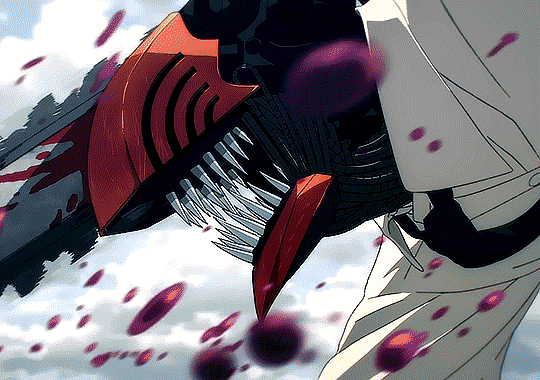
Most of the series revolves around Denji and his team hunting devils, monsters which personify common fears, and gain power from the fear of them. From hulking furry masses like the Bat Devil, to thousand-eyed pushovers like the Tomato Devil, Denji and his team take them down in a brilliant display of blades, sharp teeth, and blood spray. Violence is the life blood of this series, the thing that keeps its main characters alive, and what keeps viewers like me paying attention.

Each confrontation is intense, as the human-looking heroes face off against monsters that dwarf them in comparison. The series establishes early on in every fight just what the opposing devil can do, and how that poses a threat to Denji and his team, making it feel like there's little hope in their survival. This, combined with the constant reminders from Denji's superiors of how many previous hunters have died on the job, gives each fight a sense of stakes to it. Characters can (and eventually do) die, so each fight, even those early on, are tense.
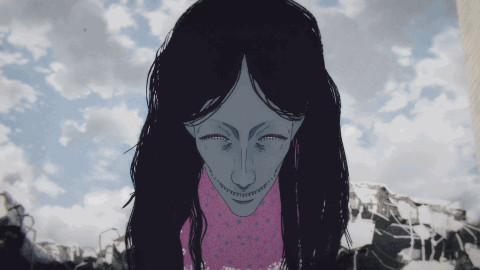
The music, as well, its pretty damn good. I'd already heard the opening track, KICK BACK this summer, and play it a lot while doing chores, but the opening animation that goes with it is really interesting. Look closely, and you'll see shot-for-shot references to famous films, like The Big Lebowski and Pulp Fiction. Each episode also has a unique ending theme, something unique to this series that made me sit and watch each episode all the way through. Most endings are abstract, mostly just the main characters standing around or posing, but all are experimental, including one that is mostly rotoscoped. They were all a joy to watch, a happy surprise at the end of each episode.
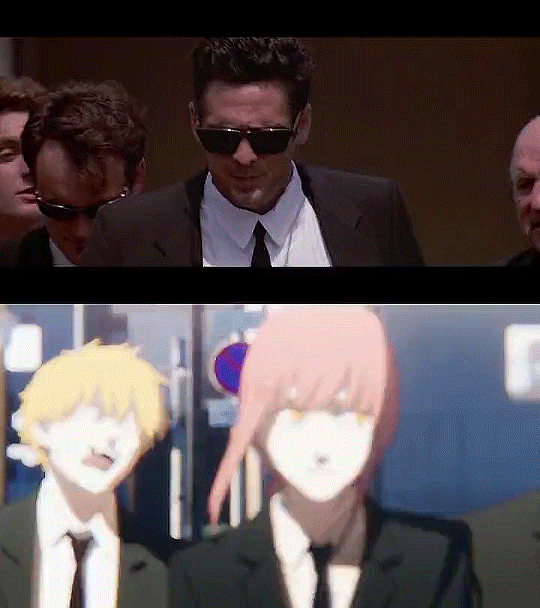
Unfortunately, nice music, dynamic fight scenes and a few gallons of blood tossed around can't distract from the many sins of this anime, ones that made it a very uncomfortable viewing experience. When I started this series, I was optimistic about it, and wanted to learn more about its world and characters. But by the second episode, it became difficult to ignore the less savory aspects of this series, which only worsened with each subsequent episode.

Denji, the show's protagonist, is a teenager who had his youth stolen from him by the Yakuza, when they forced him to take up his father's debt. Once he is freed from it, however, his true nature is revealed, one which makes it challenging for viewers like me to like him. This series, it seems, has broken new ground with its protagonist, since I doubt any self-respecting shonen would have a main character (who we are meant to like and care about) be as unabashedly horny as this one.

That's not to say that having a character who likes sex is a bad thing. People, fictional or not, are allowed to like whoever they want, however they want (with consent of course :)). Denji, though, takes the trope of 'sex obsessed teenager' to the extremes, proudly declaring that the only reason he hunts devils is to have sex with his boss. It gets to the point where one of his teammates accuses him of not taking the job seriously, and Denji has the audacity to claim he is. Meanwhile, Denji is lured into a trap by a female character, all because she offered to let him touch her breasts. These, as well as the countless other instances of Denji staring at women's chests instead of their eyes, or whining about how he wants to 'cop a feel', made him a character that was infuriating to watch get his way.
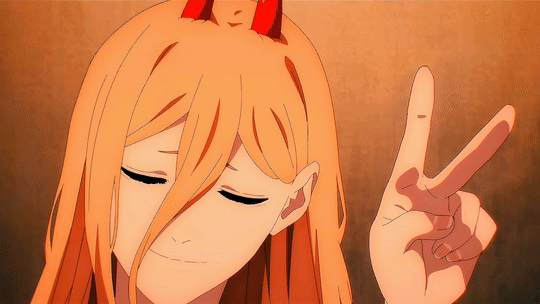
To make matters worse, it seems like nearly every woman in the series is infatuated with him enough to not only let him do these things to them, but outright encourage them. Halfway through the series, Denji and his teammates join up with another trio of devil hunters to investigate an apartment complex. Before entering, one of the female hunters declares that whoever kills the devil inside will get a kiss from her, and when Denji declines, she whispers that she'll do it "with tongue". Around the same point in the show, Denji's boss Makima explains to him about the Gun Devil, the most powerful and most feared devil ever. When he shows apprehension about taking on such a fearsome foe, Makima offers to do whatever he wants if he kills it, heavily implying that she'll sleep with him.
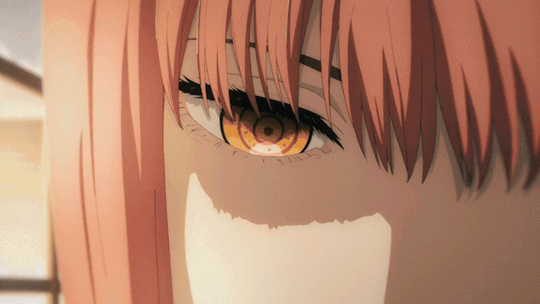
Never in my life have I watched a show where adult women proposition a teenager, something which I was proud to say until today. I wish I could say that it had its purpose in the overall story, but the show hardly has anything to say about it, almost as if it had no problems with it in general. Denji is sixteen, and the hunters that offer to kiss or sleep with him are easily in their 20's, maybe even early 30's, making every 'romantic' or 'sexy' moment in this show a fur-raising experience that took me a bit to recover from. If it was once, and to make a point about the transition to adulthood, or how its morally wrong, I'd understand, but this is absurd. Whoever thought that a scene where the main character's co-worker drunkenly kidnaps him, then coaxes him into have sex with her is okay, should be fired, and have their hard drives searched by the FBI.

I wanted to like this show. Really, I did, especially after all the hype it has, and all the lovely fanart of it I see on my social media feeds. But after having to sit through all 12 episodes of this, I think I'm tapping out. Sure, the fights are great, especially the final one between Denji and Katana Man, where they fight on a subway. The sharp teeth, blades, and constant blood spray were so thrilling, they almost made me forget about the sexual assault stuff. Keyword 'almost'.

Chainsaw Man isn't just a shonen series about the tumultuous journey from teenager to adult: its an action series with cool monster designs, a feral hero, and more blood than a used tampon. But also, its a series where the main character demands sexual favors, and is rewarded with them by adult women time and time again. This series was a mixed bag, one that had me either glued to the screen or wanting to shut it off, with hardly any in between. The main character should've been anyone else (honestly I'd prefer to be following Power, she's way more interesting), and as the series went on, I felt myself wishing for characters to just die already, so I wouldn't have to put up with them anymore. Here's hoping in season 2 that I get my wish.
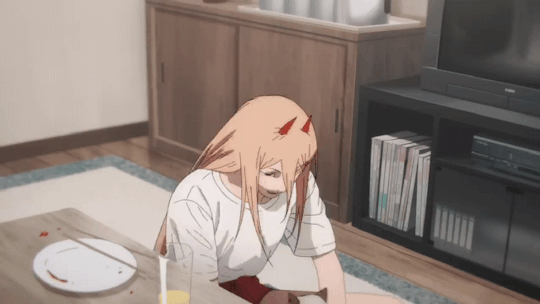
#anime and manga#anime review#film critic#review#anime#anime critique#chainsaw man#chainsaw man anime#power is best girl
5 notes
·
View notes
Note
RE: SLOPPY.mp3
Holy shit I'm fucking crying! Best voice line ever, I've been truly blessed on this day.
13 notes
·
View notes
Text
Who are all you people, and how are you finding my reviews?
Keep it up, don't stop.
0 notes
Text
Devilman Crybaby Review
The human body, for all its flaws, is surprisingly malleable. With the billions of people on this earth, living their own unique lives, one can find a variety of shapes and forms across our species.
But while the body can be beautiful, if twisted, it can also become monstrous. Stories of transformations and deconstructions of the human body have been around since ancient times, with each culture having their own that are passed down from generation to generation. Why is it, though, that we fixate on these tales of human transformation, of monster-hood? Perhaps they confront our fears head-on, tackling tough topics such as bodily autonomy, disability, racism, sexism, and the like. Whatever is the case, stories of humans defying their bodies and undergoing transformations have stayed in the minds of many for ages, and continue to be told and retold for generations.

All of this is to say, that when a major series concerning this type of story is brought to me, I'm sure as hell to pay attention. One of my favorite story arcs is tales of human transformations, so when this anime was assigned to me for this month's Anime Exchange, I was very excited. How could it not be good? Its a guy who turns into a monster! Unfortunately, things aren't so simple...

Devilman Crybaby is an anime series produced by Aniplex, and released by Netflix in 2018. The series, based on the manga Devilman, by Go Nagai, follows a highschooler named Akira and his best friend Ryo. When Ryo and Akira discover a burgeoning population of demons in human disguise, Akira fuses with a powerful demon, and the pair form a crime-fighting duo bent on eliminating the monsters. Along the way, Ryo's motivations become more and more sinister, and Akira struggles with his newfound powers and the responsibility he feels comes with them.

Akira's journey, from 'crybaby' weakling to monstrous hero is shown in a way that prompts audiences to weigh the pros and cons of his new powers. Akira's new powers come with a more conventionally attractive and muscular body, one that brings him unwanted romantic and sexual attraction from women everywhere. He's the fastest on the cross country running team, but is plagued with nightmares of monstrous women. Rather than giving Akira this new, improved quality of life with his demon powers, the anime goes out of its way to show that even though he's a superhero now, his life isn't any easier.

However, it would have been nice if the series pushed this dichotomy a little bit harder. On the surface, Devilman Crybaby is a textbook example of the 'Descent into Monster-hood' story: a plot in which an ordinary human is infected with or otherwise acquires a monstrous alter ego, which they can transform physically into. The human grapples with this newfound power, and must struggle to control their violent urges or incredible strength, as they hide it from family and friends. (gif relevant)

While the first chunk of episodes follow this plot archetype well, giving an interesting take on it, the series doesn't show enough of Akira struggling with his powers for it to feel satisfying. Sure, he has a massive appetite, and runs like a lizard on cocaine, but we never really get to see how his powers clash with his 'ordinary' life. This, then, makes his transition into accepting his demonic nature feel a bit rushed, skipping the most important part of the 'Descent into Monster-hood': the descent itself.

The visuals of this series are... perplexing. Equal parts graceful and beautiful as it is wonky and hilarious, the animation is something that you can't look away from, for love nor money. Characters that are standing close to the center of the shot look wonderful, and move with slick, sweeping motions, their eyes sharp, as if everyone is wearing mascara. But when the camera angle changes, and the shot pulls further back, characters turn into shapeless blobs of color, leading to important characters doing important things looking laughable. A scene where Ryo waves a gun around and beckons for Akira to join him becomes instant comedy once the camera moves to a wide shot, for example.

This, combined with the total lack of shading on any living thing in this anime, leads to a look hurts the series more than it helps. Its amazing how the art style of this show swings back and forth, between really stylish and nice, to ridiculous. At times, I wanted to snap a screenshot of a scene and see if I could fix it myself with shading and more solid shapes at a distance, but its not like that would help.

Adding shadows to characters wouldn't be enough to distract from the most glaring issue I had with this series: its portrayal of women. I know that its basically common knowledge in anime these days, that you shouldn't go looking for good female representation in shonen/seinen series, but I believe that genres and demographics can change with the times. Every modern adaptation of an older property has the chance to do justice where the original failed, correcting the mistakes caused by short-sighted ignorance and old-school biases. Dororo, a series I reviewed earlier this year, shows that this can be done without an issue, without affecting the plot in major ways.
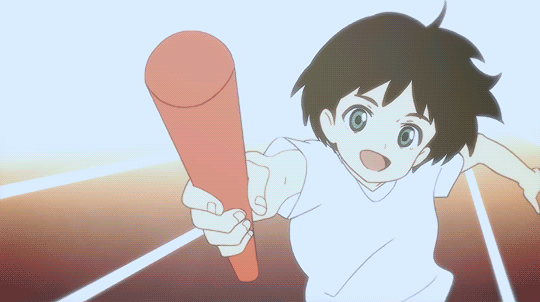
And yet, we have this series, which only ups the ante in terms of making women the target of every crime and misfortune, going out of its way to portray them either as screaming victims or walking pairs of breasts. Out of all the female characters in this anime, the amount that were never shown naked, in sexual situations, or dying horribly is pretty low, possibly zero. Yes, its a dark and violent reboot of an already violent manga, meant to be a cautionary tale about humans being too quick to judge others and destroying the world because of it, but this also came out in 2018. Most people would expect a little bit of decorum, at least.
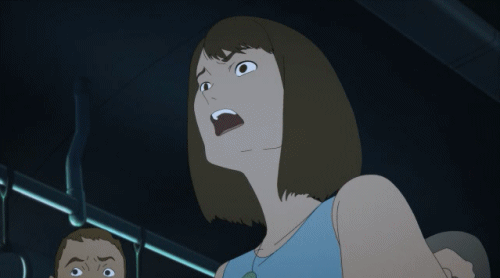
The first incident, the club scene in episode 1, was shocking, but made perfect sense. An underground sex club full of drugs, topless women, and neon lights is the perfect setup for Akira's worldview changing as he fights his first demon. Its wild, colorful, and the bass is loud and constantly thumping, like a heartbeat. It makes the carnage seem surreal and fantastical, like the audience is tripping alongside Akira.
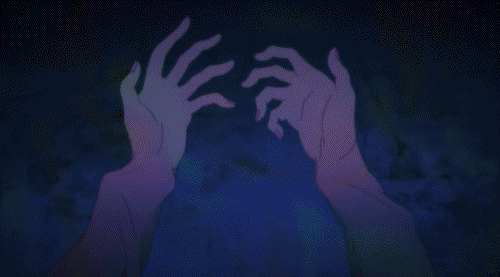
But then we learn about Miki, Akira's childhood best friend, and her illicit model job which she feels that she must do in order to make money. In one scene, Miki travels to her boss' house, and uses his bathroom to rinse off after getting caught in the rain. Unbeknownst to her, the bathroom has a one-way mirror, through which her boss takes nude photos of her without her knowledge. Later, when Akira meets with Miki on her balcony, a scene that was probably intended to further their romantic chemistry is shattered when we see that Miki is wearing a see-through nightgown.

Then there's Miko, Miki's running rival, whose main characteristic that she is first introduced by is her large breasts that bounce when she runs. Unlike her rival, Miko has a more compelling story, revolving around her accepting a demon into her in order to prove herself against Miki, all for a nickname and a sense of pride. When Miko finally admits her jealousy to Miki, the two share some tears, in a heartwarming scene of acceptance amidst strife and chaos. Her arc, of rising above manipulation and sexual assault to become a powerful monster, had me worried at first, but had me in a good mood by the end of the series. Yet no matter how important Miko is, no matter how cool they make her 'Devilman' form, the show continues to emphasize her breasts, which expand to a ridiculous size and bounce around with each movement like water balloons.
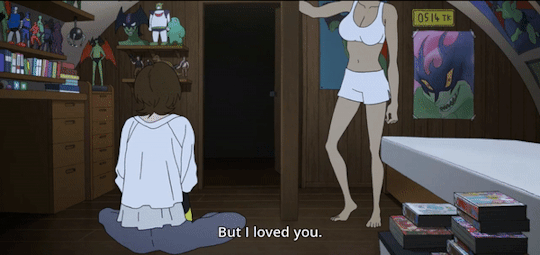
Not everything is horrible in this anime, though. The music is stellar, full of thumping club songs, and a remake of the original Devilman no Uta, the theme song of the original Devilman series. A lot of the soundtrack is now on my personal playlists for writing, because they have this dark, yet energetic vibe to them.

As well, the violence in this series is top notch. In a show where a teen turns into a monster and beats up other monsters, you'd be a fool to not expect some bloodshed. Still, this series lays it on thick, bathing in a pool of yellow and red blood from the carnage of each episode. Akira's transformation in the first episode is a stand-out moment for me, just because of its sheer coolness factor. His eyes, the point-of-view shot from inside the demon's mouth, Akira's chest heaving with effort, its just a beautiful shot that I wish I could print out and stick to my wall.
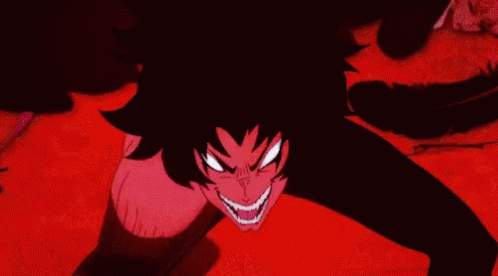
At times, Devilman Crybaby reminded me of Castlevania, the other major violent, monster-y Netflix anime with critical acclaim. While both shows have vastly different approaches to pacing, monster design, art direction, and nudity, both hit that sweet spot of 'one guy killing lots of monsters in a shower of blood' that kept me coming back for more every time.
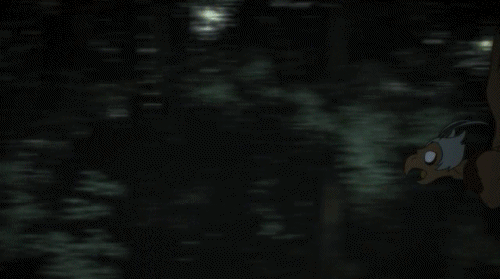
Devilman Crybaby is not a bad anime, but its not perfect either. Its visual quality is inconsistent, its main character's story arc could use a bit more polish, and as someone assigned female at birth, it made me pretty uncomfortable with how it treats it's female characters. At the same time, when it looks good, it looks great, especially during fight scenes, which are full of guts and glory.
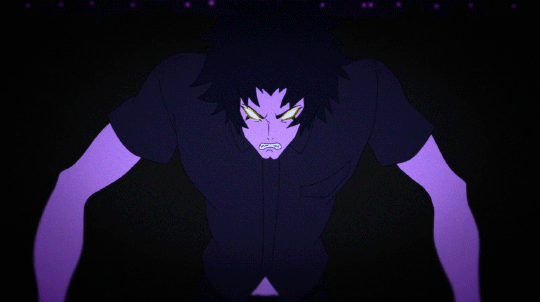
Still, my mind can't shake this anime's apparent obsession with naked women. Any time they appeared on screen, I wondered what the purpose of them being there was. Is every topless, moaning woman necessary for each scene? Am I supposed to be feeling something other than fear, disgust, or annoyance when they appear onscreen? And would it kill these guys to give Miko a sport's bra when she's running?!

I went into this series with three memories of it, from when I tried watching it when it first released: drug-addled club scene gone wrong, ripping a snake in half, and a guy running weirdly. While I sure got all three of those, they also came with more bare breasts than a womens' locker room, with all the subtlety of a clown. At least, as the end of the day, I know understand all the people shipping Ryo and Akira.

47 notes
·
View notes
Text
Reblogging for timeliness.

Since we have Xion Sunday and sprinkle It's Wednesday Lauriam I wanted to add Terra to the mix
553 notes
·
View notes
Text
Baccano Review
Since the early days of humanity, we humans have been fascinated with storytelling. From cave paintings, to oral storytelling, to the invention of the printing press and beyond, stories have been a staple of how we share experiences, lessons, or histories with subsequent generations.
When it comes to the recounting of events, though, therein lies a problem: from which perspective is the story told? Who are history's main characters? How can we possibly get a complete look at an event (or events) from only one person's perspective?

While most stories take a singular perspective, linear approach to storytelling, some attempt the daunting task of rounding up as many perspectives as possible, showing that there is always more than one side to every story.
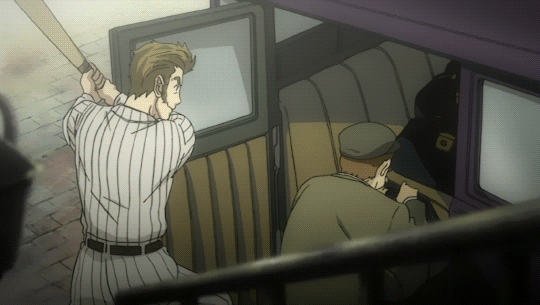
One such series is Baccano (2007), an anime based on the light novel series of the same name, written by Ryohgo Narita. Unlike most historical anime, Baccano's story is told from a dozen or so perspectives, creating a unique viewing experience that rewards audiences' close attention with a satisfying thrill ride.

Describing Baccano's plot is a bit difficult, simply because of how much goes on in it. Its a gangster story about various crime families in New York, and their endless cycle of violence against one another. Its a horror story, about a train hi-jacking that goes wrong after a murderous monster climbs aboard. Its also a comedy about a pair of goofy criminals who mess up their plans all the time, yet still somehow get away with them.

Yet, all these separate plot threads are interwoven in a such a way where each is essential to the overall story. Characters encounter each other in key moments of the plot, and their stories are changed because of each other. In one episode, we see a major character watching a fire break out at a factory, where he bumps into a mysterious woman. In the next episode, we see what the woman was doing before she got to the fire, and where she went afterwards. By doing this, Baccano weaves a complex story where dozens of 'main characters' can shine to their own degrees.

Where this comes most in handy is with how the series doles out scenes and important information. Instead of showing scenes in a linear fashion, Baccano cuts up events and scatters them to the four winds, forcing audiences to put together a timeline as best they can. One minute you could be seeing a gunfight in 1932, then the next you're seeing people board a train in 1931, seemingly unrelated. I found myself trying to plot each scene on a timeline as I watched, but by episode 4, I didn't need it anymore.

The non-linear storytelling of this anime can be tricky to anyone not accustomed to it, having a keen eye and keeping track of the three major events of the story is all you really need to understand the order of events. Each scene is book-ended with something shown in a previous episode, or relates to something that is revealed in the next episode, showing you exactly when each event takes place in the overall narrative. Its not rocket science to understand the story: it just takes a keen eye, and a basic understanding of cause and effect.
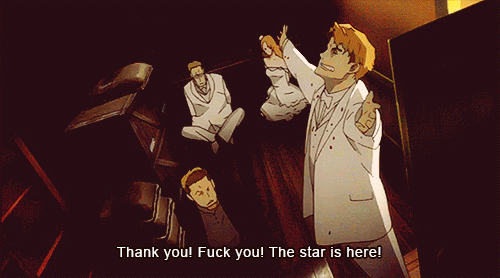
Beyond the story itself, I really enjoyed this series, especially because of its atmosphere and setting. Its a rare treat to see an anime set outside of Japan, especially a historical series like this one. Much like Black Butler (2008), another historical anime set outside of Japan, the English dub is a treat, featuring all the old-timey accents that you'd expect for the time period. That, combined with the occasional use of slang (such as using 'giggle juice' to refer to alcohol) and references to 30's pop culture, made the dialogue flow smoothly, and feel natural for the setting.

While taking place in the 1930's, Baccano is in no way a realistic depiction of history, something which isn't helped by it's fantasy plotline. The fantasy element of Baccano's plot doesn't ruin the show (I believe it actually makes the story cooler, though I feel like it could've been integrated more smoothly into the setting, or at least given more time to develop.

That, unfortunately, is the main issue with this series: it really needed more time. With a plot as dense and complex as this, you'd think it would get more time to stretch out and get comfortable. 13 episodes is shockingly little, especially for an adaptation of a light novel series with over 20 books in it. It baffles me that Brain's Base (the studio behind this anime) didn't give this series a longer run, or even a second season. It certainly could do with it.
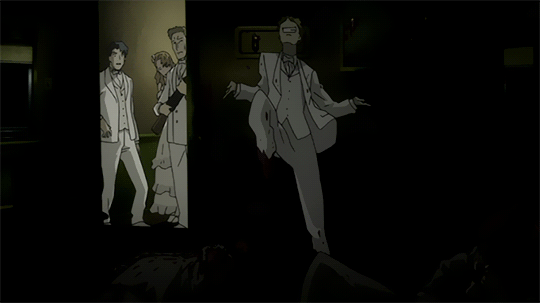
Still, this series makes the most of its short stay, like a tourist who insists on 'doing everything' on their weekend vacation to New York City. Every character gets a decent amount of screen time and a clear goal, and that goal is either reached or missed tragically. For a show with such a short run, its quite impressive just how much information and story is packed into its 13 episodes. By the end, I felt a connection to the key players, like we'd spent a whole afternoon together (which may or may not be related to me watching most of this anime in one afternoon).

All in all, I quite enjoyed Baccano, though I wish it was longer. The non-linear storytelling was a bit jarring at first, but didn't take me too long to understand. The characters ranged from hilariously stupid to genuinely cool, and each was entertaining to watch. At the end of the day, though, I only wish this series was longer. Characters like Ennis didn't feel like they got the time they deserved, and could've brought this series up from 'great' to 'excellent' if they had gotten more time to develop and explore.

I definitely recommend this series to anyone who hasn't seen it. Sure, its violent, bloody, confusing, weird, and ridiculously short, but it makes the most of what it has. We can only hope for a surprise second season announcement in the near future.

(Also this guy is the best character. I will not apologize.)
#anime and manga#anime review#review#anime#film critic#anime critique#animation#baccano!#claire stanfield
44 notes
·
View notes
Text
Skull-Face Bookseller Honda-San Review
There are two types of people in this world: those who love taking a trip to their local bookstore, and those who hate fun. I happen to be part of the former group, and try to visit my local Indigo at least once or twice a month just to check out what’s there. Sometimes, its just nice to wander through the aisles, and casually explore what’s there, without really looking for anything in particular. Its a place so laid back, it begs the question: ‘Working there can’t be that hard, can it?’

As it turns out, working at a bookstore is pretty complicated, something that I learned after watching this month’s assigned anime: Skull-Face Bookseller Honda-San. Based on the manga of the same name, this series follows a skeleton named Honda who works at a non-descript bookstore in Japan, stocking shelves and helping customers. Each day brings new challenges which Honda and his odd-headed co-workers must face, in wacky (sometimes barely animated) hijinks.

Skull-Face Bookseller (abbreviated to SFBH from now on for brevity) is a series whose main focus is being a ‘relatable’ workplace comedy. Folks like me who’ve never worked at a bookstore might find themselves getting confused at all the workplace lingo thrown around, though the series does a good job at explaining the concepts to the audience. The series, though, has this overall sense of expectancy over it, as if the creators are waiting in the bushes for you to laugh at their ‘relatable’ jokes. Every time a character complains about working too long, about how customers are rude, or how their job sucks, the anime expects you to relate that to your own working experience and therefore laugh along.

And yet, it always stops before it gets too pessimistic. Most shows that I’m familiar with about people with jobs go down this doom spiral, where characters obsessively complain about work. Their job sucks, something happens that they weren’t expecting, they react negatively, rinse and repeat. Here, though, the writer steps back right before the spiral begins, acknowledging the problem but refusing to let it control their life. SFBH is a refreshing take on the time-worn workplace comedy, because it doesn’t make the entire joke of the series ‘Working sucks’.

Instead, the main joke of the series is the appearance of the bookstore employees. Just like in the original manga, Honda and her co-workers are depicted as wearing unusual helmets or masks, giving them a sense of cartoonish silliness that separates them from the customers at first glance. I’m not exactly sure why they look like that (my guess is to protect the identities of the real people involved), but the weird faces has an added benefit beyond simple aesthetics. In a series that revolves around a large cast of recurring characters, confusion is inevitable, especially since some manga artists suffer from ‘Same Face Syndrome’ with their female characters. Since the main cast of SFBH are all wearing weird head-coverings, its easier to remember who is who, and every character looks distinct.

SFBH’s characters also fall into this weird grey area when it comes to gender recognition. Since most characters have their faces fully covered, our only traditional means of distinguishing are from dialogue. Nobody ever mentions the word ‘man’ or ‘woman’ (and knowing Japan, I’d be shocked if the concept of non-binary was even hinted at), but the occasional ‘him’ or ‘she’ is thrown around when referring to someone. The Japanese voice actors sound like what one might expect from a ‘she’ or a ‘he’, but when it comes to Honda, things get complicated.
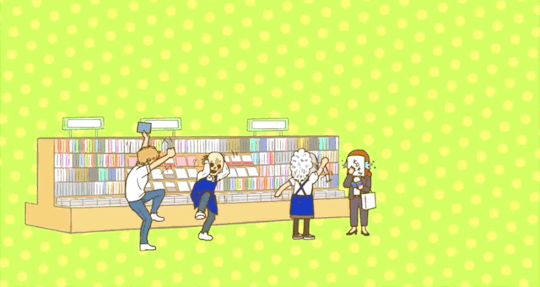
Honda is, of course, a skeleton, who lacks any stereotypically feminine or masculine traits. His face is plain, his bony frame is mostly hidden under a white shirt and blue work apron (and what would we even expect to be under there, besides bones?). By all accounts, Honda is pretty androgynous, something that isn’t too common in a series where that isn’t the main punchline.

What makes things interesting is how Honda herself identifies. In the anime, Honda is voiced by Soma Saito, who you might recognize as that green-haired wimp Tadashi from Haikyu. Because of this, Honda sounds very masculine, and the subtitles agree, referring to him as ‘he’ or ‘him’. At the same time, the character is intended to be representing the author, who identifies as female. There are a few times in the manga where Honda is read as female, including being referred to as an “older sister” type, or when a customer declines her offer to help carry a heavy bag because it would be ‘too heavy for a woman’.

Honda flip flops between being read as male or female, while showing no obvious signs of being either. The very beginning of the series has him lament about the typical image of a bookseller being a sweet, glasses-wearing young woman, and how he doesn’t fit that image. Yet, later in the series, when Honda talks with her manga editor about a live-action adaptation, they joke about which male actor they would cast as her. I’d like to believe that Honda is genderfluid, which would be groundbreaking for a Japanese manga, so it gets representation points in my books.

Beyond complicated gender identities, anyone who is even mildly versed in manga will get a kick out of this series for how often it references popular series. Characters will burst into a scene, asking if there’s more copies of a famous manga in stock, all the while the name is barely censored because of copyright. Well-known manga references are thrown all over the place, giving the fictional bookstore a greater sense of legitimacy. Instead of making obviously fake titles, they just said ‘screw it’ and used real ones, making it feel more real. While watching this anime, I found myself trying to identify all the manga mentioned by characters in dialogue, almost like a little game. Its pretty fun, if you know your stuff.

I’d also like to think that whoever recommended this series to me knows me really well, because the amount of references to yaoi or BL in this anime is shockingly high. The entire first episode is practically devoted to it, culminating in a scene where Honda has to deal with an English-speaking customer who is looking for an explicit doujinshi that his daughter wanted. I really don’t know what’s worse: the fact that a character mentioned a BL series vaguely in an off-hand comment and I immediately knew what it was (despite never having read it), or that I knew exactly which doujinshi the English-speaking dad was looking for. Let’s just say that I haven’t watched Gintama yet, but I have some experience with the main character...

SFBH is a good anime: not great, not fantastic, but not bad either. It wasn’t trying to be some over the top, zany comedy, or some deep meditation about workplace culture. Its a short, snappy, and visually distinct series with it’s own sense of humor, one that relies more on weird people and situations than pessimism and ‘relatability’. I enjoyed how much it had to say about how bookstores work, and I felt like I learned while watching it. One thing’s for sure: I have a new sense of respect for bookstore workers, after seeing all the hard work that goes into keeping everything in order. Now, I can rest assured that when I bring my big stacks of plastic-wrapped BL to the counter, the employee ringing me up is just as embarrassed as I am. What a relief.

9 notes
·
View notes
Text
Sometimes I remember that I live in the same part of the world as Strange Aeons. If I ever see her out in public one day, I'm gonna get so star struck, LOL.
1 note
·
View note
Text
Bocchi the Rock Season 1 Review
I’m just gonna come out here and say it right away: I’m not a fan of the ‘Cute girls doing cute things’ subgenre. I know it’s got it’s fans, and not everything someone else likes is going to be something I like. Still, when it comes to picking out a new series to try, I’m quick to dodge all series where the main characters sit around and basically do nothing. Good media, to me, is about things that don’t happen in real life, so something like K!On is too mild for me.

So, color me surprised that this month, I found a ‘Girls do nothing’ series that actually got me engaged and entertained. This month, I was assigned the series Bocchi the Rock by my friends at my university’s anime club, and what I initially expected to be another snooze-fest hyped up by legions of diehard ‘moe’ fans, turned out to be a heartwarming story of overcoming Social Anxiety Disorder through the power of friendship.

Bocchi the Rock stars Hitori Gotoh, a 15 year old with crippling social anxiety who has a passion for the guitar. Hitori, (who later gains the nickname ‘Bocchi’, a pun on the Japanese word for loneliness), spends her days in her closet, posting covers of popular songs on Youtube and dreaming of stardom. A chance encounter with other musicians her age thrusts her into the world of underground rock bands, where she becomes a guitarist for an indie band, and faces her anxiety head-on.

What struck me immediately about this series was how often Bocchi’s anxiety was brought up, and not always just for a gag. Her social anxiety makes even the smallest interactions a struggle, from trying to join a conversation with classmates, to making plans outside of school. Yes, the series uses some of these moments to lighten the mood with a little bit of comedy, but overall, its clearly not trying to minimize her struggles or make fun of her.
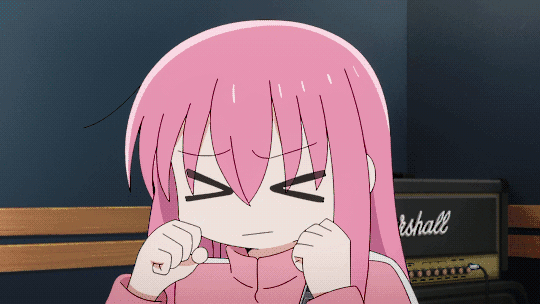
Bocchi’s anxieties often lead to catastrophizing, linking even the smallest perceived slip-ups with total annihilation. In one episode, we see what she thinks will happen if she tries getting a job: she gets flustered dealing with a customer and stumbles over her words, someone films it and it goes viral, she is called into court to testify for the crime of being weird, and then given the death sentence. Scenes like these are cute and light-hearted gags, but also can't help but make you feel bad for her. They give a greater insight into how her social anxiety affects her, and do a better job at representing social anxiety than your typical ‘shy kid’ archetype.

Bocchi’s fantasy sequences are also the highlight of this series, because of how experimental they can be. These scenes are probably the most discussed aspect of this series, and for good reason. There aren’t many anime out there that switch art style this often, just for a quick bit. Bocchi the Rock uses zoetropes, stop motion, clay figurines, live-action footage, and much more to break free from the monotony of cutesy style in order to convey the main character’s feelings. Its not every day when you see an anime girl revert back to her 3-D model and smash into a pile of untextured polygons.

The animation in this series is also quite good. I was pretty shocked to see the girls playing their instruments in a somewhat accurate and realistic way, which you’d think would be a low bar for a series about a band. The studio behind this series clearly put in the extra time and effort to animate the guitar and drum playing accurately, and are clearly proud of it, with the amount of close-ups they show of the instruments being played. It almost makes you wonder why other music-centric series aren’t like this...
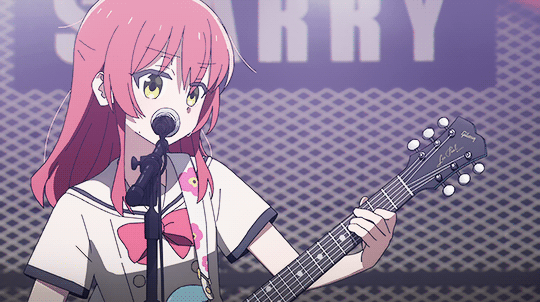
Bocchi the Rock’s weakest aspect, however, is it’s characters. In most ‘Girls doing nothing’ series, cuteness is prioritized over deep character writing, so main characters often lack any negative traits. These series are content with re-packaging simple character traits, knowing that giving the characters a chance to show any negative traits will take away from their perceived cuteness or ‘wholesomeness’. The same, unfortunately, can be found in this series, as the four main girls stick to the common character archetypes of the subgenre, and don’t make much of an effort to deviate from them.
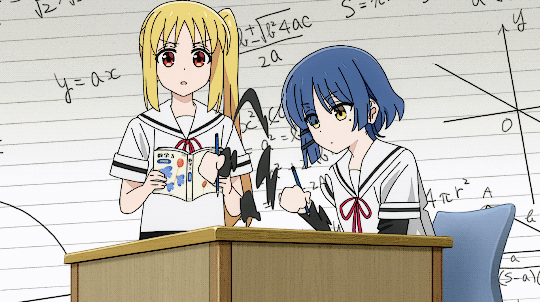
Nijika, the blonde, is little beyond the peppy heart of gold, the face of the group. Kita, the redhead, is never shown to be anything more than the perfect, pretty popular girl that everyone adores. Ryo, the blue-haired one, has some level of character flaws, as she reveals herself to be terrible with money, and ends up owing her bandmates lots of money by the end of the season. However, beyond Bocchi herself, we rarely get to see the bandmates presented outside of their archetypes. Perhaps in season 2, we could get to see the characters reveal more about themselves, and struggle with things from their own lives?

The series’ story has a decent flow to it, following Bocchi and her band’s journey from obscurity to their first big break. At times, I felt a bit lost, wondering when the characters were going to move to the next big event instead of doing little thing, but that’s about par for the course when it comes to these types of plots. The plot revolves mostly around performances, interspersed with downtime in between, where we see the characters socialize, go shopping, or peek into Bocchi’s home life. While the show in general does little in terms of building suspense in these in-between moments, Bocchi’s internal monologue paints a clear picture of how important each performance is, making each one feel like a battle she must face.

With a season 2 on the way, I can only hope that this series continues down the path its headed, and tries to improve where it lacks. Its a ‘Girls doing nothing’ series that isn’t afraid to give one of it’s characters crippling social anxiety, and lets her have flaws beyond just being clumsy in a cute way. I can only hope that the rest of the cast gets the same treatment in the future, which I believe will lead to a deeper story, and therefore, a stronger emotional core. Overall though, Bocchi the Rock is a funny and light romp that occasionally takes a detour into downright zany visuals, and we are here for it. I’m not usually a fan of cute girl-centric series, but perhaps I’ll make an exception, just this once.

3 notes
·
View notes
Text
For those who don't know, I play Guilty Gear Strive. I'm a big fan of the game, and when people ask who I want for DLC, I find my answers don't always align with the popular ones. I get that everyone wants Elphelt in, but honestly, I'm not a fan of her. I know that we'd never get along, if she were real.
One thing led to another, and I drew this, based on a joke my friends and I made about it. Me vs Elphelt, Aromantic vs Hopeless Romantic!
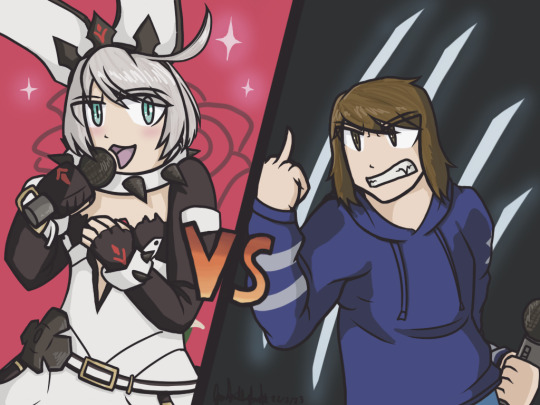
#guilty gear#otaku culture#fanart#elpheltnation#elphelt guilty gear#elphelt valentine#epic#original character#fighting game community
5 notes
·
View notes
Text
Another Anime Review
There’s some series that, over the years, you hear about from other people in the anime fandom at large. Usually its just about the overall series, and people will tell you to not look it up, just to start it. You just kinda have to take their word for it. Then there’s others, where its the events of the series are what people talk about. Some pieces of media have a moment so iconic, that they’ll tell you about it first, then what the series is about afterwards. Scenes like those are often cut up and put into YouTube compilations, titled things like ‘Top 10 WTF Moments in Anime, Part 3′. Those clips often stick in the mind for years, waiting for their chance to be rediscovered and understood in full context. This just so happens to be the case with this month’s Anime Exchange assignment, a 12 episode series simply titled Another.

Another, based on the manga by Yukito Ayatsuji, is a supernatural mystery series that follows Kouichi Sakakibara, a teenage boy who is a transfer student at a small town high-school. Upon arrival, he discovers a mysterious girl with an eyepatch who nobody acknowledges, and learns about the mysterious ‘Calamity’ that seems to befall the third 9th grade class every year. One by one, students and their families die mysteriously, and its up to Sakakibara and the mysterious girl to figure out why.
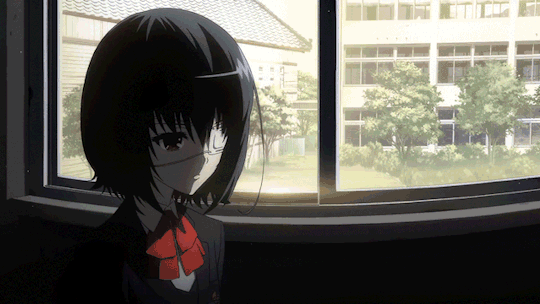
Series like these are usually out of my usual range, but I found that I was pleasantly surprised with what was offered. I was immediately grabbed by the sense of mystery and dread steeped into every frame of this series. The visuals are muted, with even bright sunny days lacking their typical shine and luster. This, combined with the resting gloomy faces that every character had, really set the tone for the entire series from the get-go. Wherever scenes took place, the series maintained this depressing atmosphere, something which is quite impressive given that it attempts the time-honored anime tradition of a beach day episode in the second half of the series.
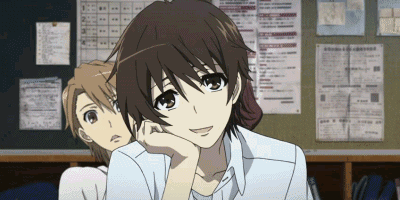
However, what made itself apparent just as quickly as it’s tone was this series’ love for lore-dumping. In the very first episode, we see Sakakibara recovering from a collapsed lung in the hospital, where he meets three students from the high-school that he is transferring to. Their full names and titles are thrown at the viewer so fast, it’s quite difficult to process. This is something that, unfortunately, happens quite a lot in this series, as it needs audiences to be familiarized with the entire class before it can start killing them off. I found myself remembering characters by a key characteristic of them, not their names or titles (’Glasses Girl’, ‘Pigtails’, ‘Carsick’, etc), which lead to confusion whenever they were brought up in an important conversation.

This problem is only compounded when the series starts playing with names to keep up the mystery. In the earlier episodes, Sakakibara discovers that years ago, a student named Misaki died in the third 9th grade class, an event which started what is known as the ‘Calamity’. What makes things complicated is that there is revealed to be two other Misaki’s in the series: one who died in the hospital on the night that Sakakibara was discharged, and the other who is the mysterious eyepatch girl. Everyone in the series refers to all three of these characters as ‘Misaki’, so good luck figuring out which one they’re referring to, unless you were really paying attention, or have already seen it.

The main Misaki herself (or as I call her, Eyepatch Misaki) is really not much of a character at all, which is quite disappointing. Her role in the story as a whole makes sense, being the creepy goth girl who everyone is fine pretending doesn’t exist to try and stop the Calamity. However, beyond that, she really doesn’t do much. For someone who gets nearly as much screen time as the main character, and could be considered a deuteragonist, Eyepatch Misaki does little to progress the plot. Most scenes she is in, she simply gives vague hints about the mystery, follows Sakakibara from place to place, and hardly shows any emotions. She could be replaced with a stuffed animal and she’d still have about the same level of agency or importance.
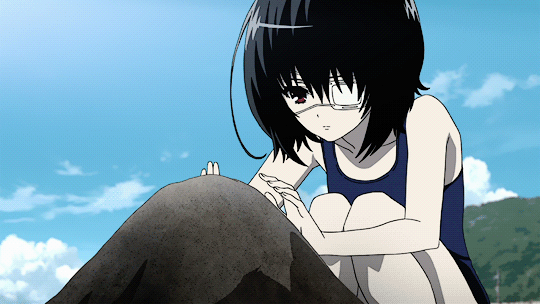
What makes this all the more disappointing is that the series has enough time to develop many other characters in it’s 12 episodes, yet excludes Eyepatch Misaki from this in order to keep up her air of mystery. Characters like Akazawa, the Head of Countermeasures, are given full and satisfying arcs, yet Eyepatch Misaki remains as she was in the very first episode until the end. In a series whose main cast is a classroom of students, screen time and character development is precious. Every character is fighting to be the one that audiences latch onto, to be the the one who people remember the most, or whose death hits them the hardest. What baffles me is that the most important one (aside from Sakakibara), the one who is on every poster or cover of this series, is little beyond a macguffin or, to borrow a phrase, an eyepatch-wearing lamp.
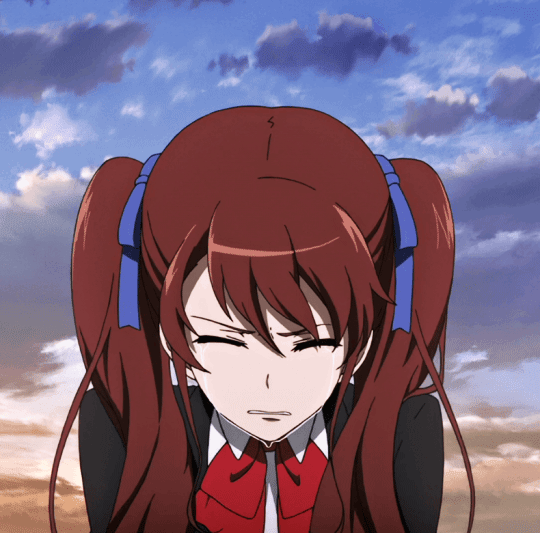
What saves this series from being just another creepy high-school mystery series is its brutality. I wouldn’t consider myself a gore aficionado, but when I learned that this is the series that the infamous ‘Umbrella Girl’ clip came from, I was immediately excited. That one clip is just a taste of the bizarre and sometimes downright cruel deaths in this series, as one by one, the students of the third Grade 9 class succumb to The Calamity. The deaths in this series are also pretty creative, and prey on common fears that anyone might have in the back of their mind. Combine the fear of falling down the stairs with the old ‘Don’t run with sharp things!’ adage, and you get something so perfect and brutal that you won’t be forgetting anytime soon.
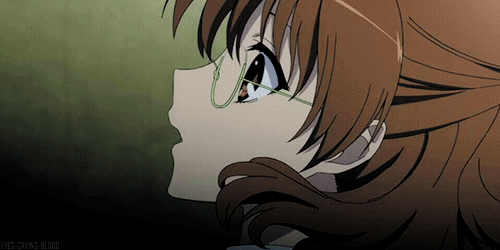
The best thing that I could compare this series to would be the Final Destination films. The comparisons to Final Destination are pretty easy to see; a group of teenagers do something to anger Death itself, and are picked off one by one in highly improbable ways to atone for that. However, I would say that this series is less stomach-churning than those films, as the characters’ bodies still stay mostly intact even after death. This might have been a budgeting decision from the studio, but if it allows me to eat my homemade guacamole while watching, I’ll say that’s a plus.

Another is a series that really made the most of it’s short episode run, albeit by rushing here and there. The visuals are good (though I wish they’d stop putting the highlights of hair in the shadows...), and the story is pretty engaging, such that I found myself trying to work out the mystery on my own between watching sessions. However, the series also has a penchant for dumping lore on the viewer, bombarding them with names and dates that it refuses to help the viewer process. This is a series best watched with a pen and notepad in hand, so you can write down all the information characters drop before its too late.

As well, I wish this series had spent some more time developing and fleshing out it’s second main character, Eyepatch Misaki. She really had the potential to be cool, especially with the mystery behind her second eye and the doll shop, but she was often pushed aside in favor of side characters. Perhaps she is more developed in the manga, but who knows when or if I’ll get to that.
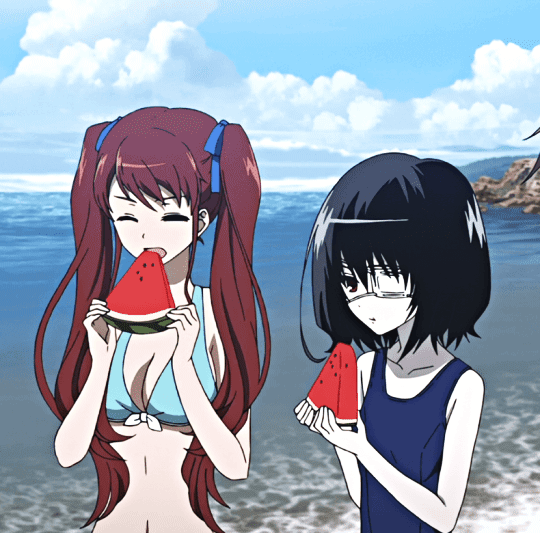
7/10
5 notes
·
View notes